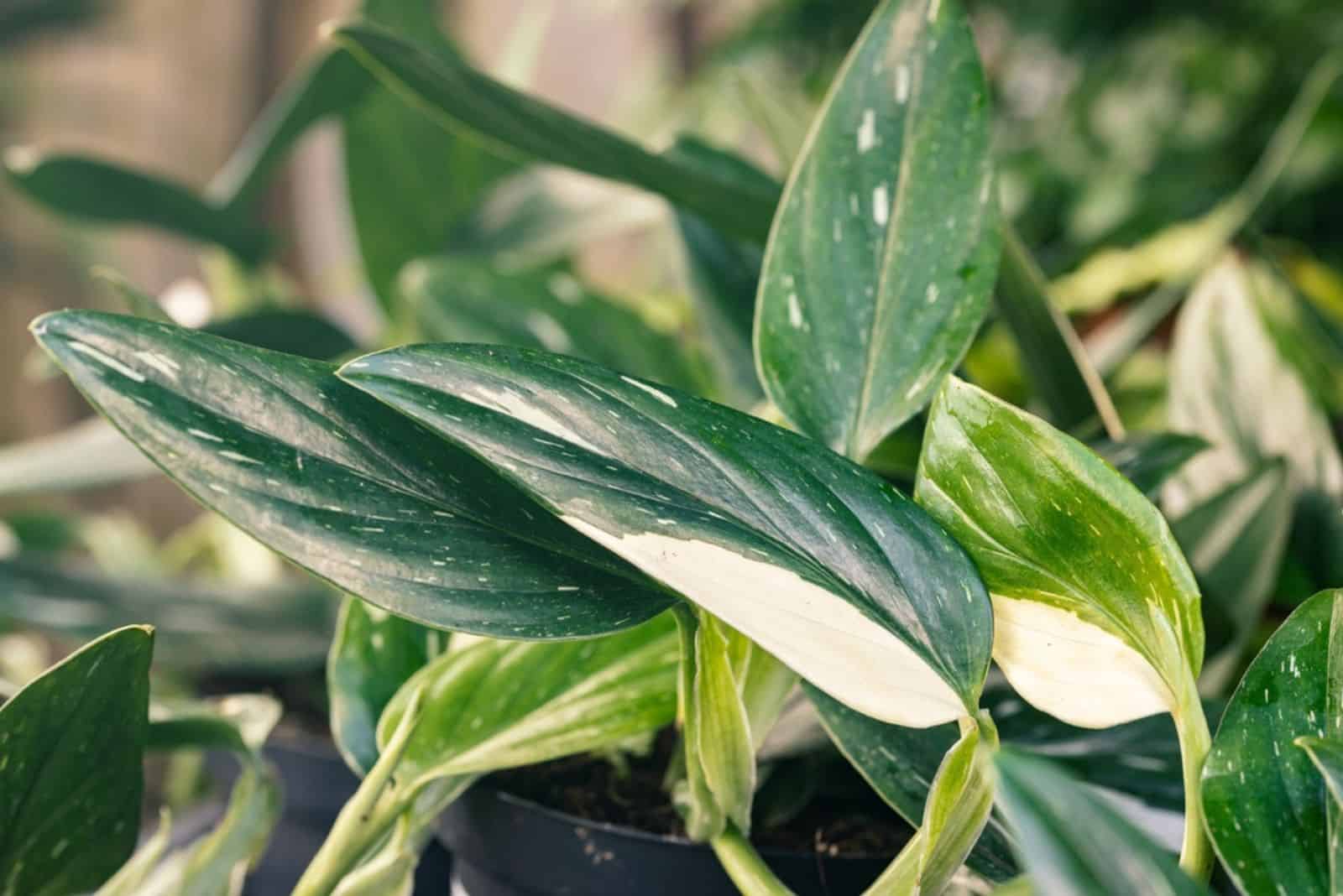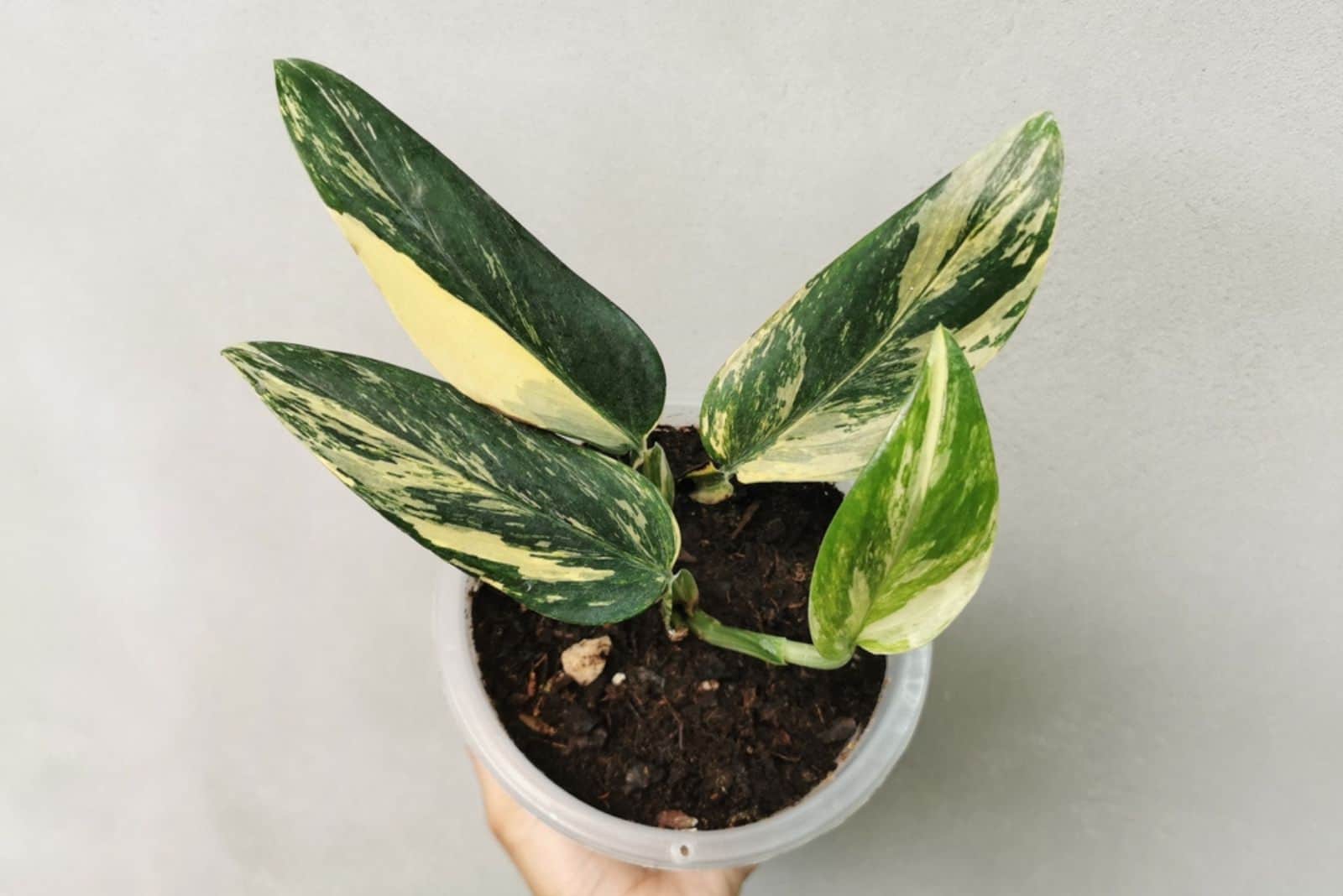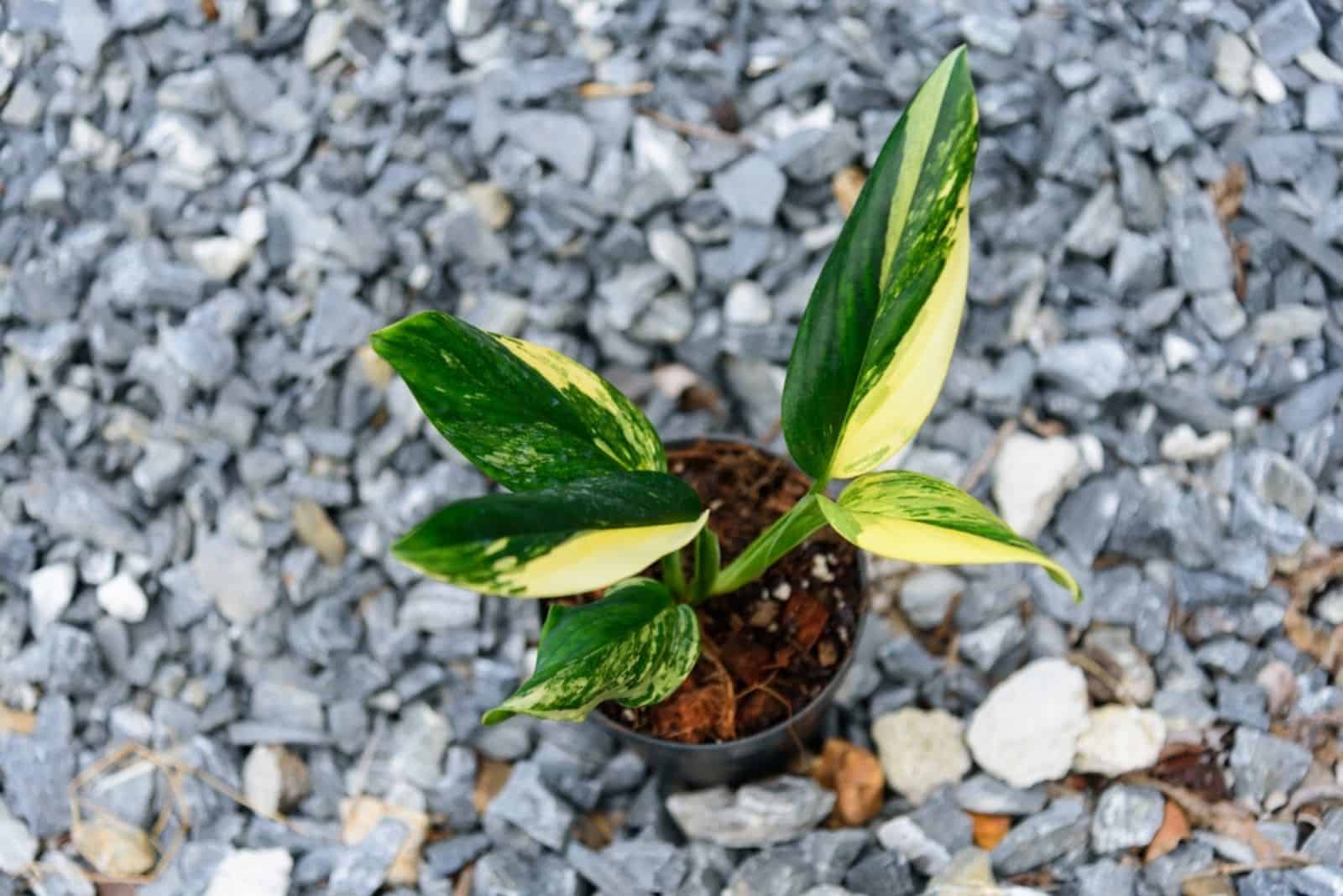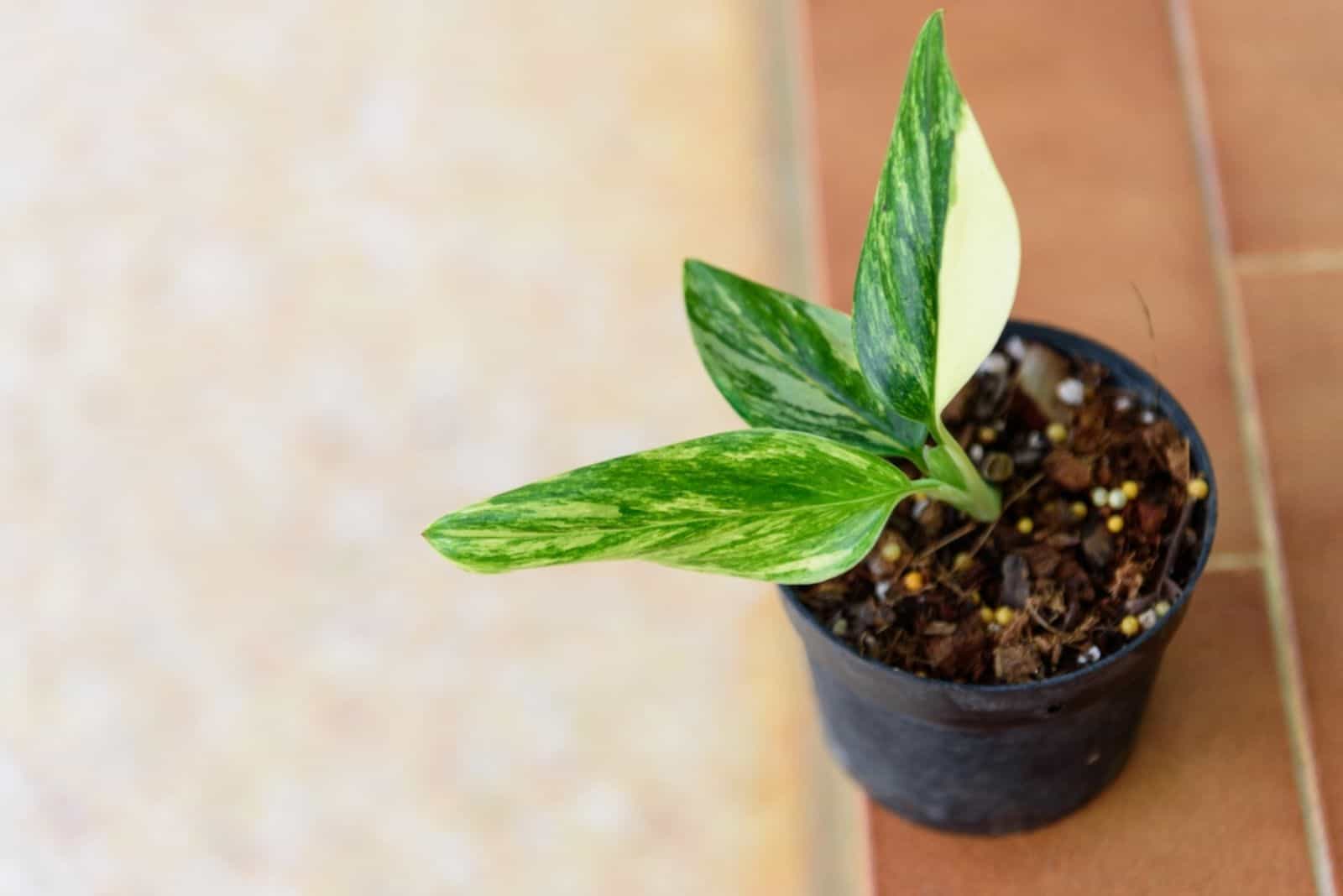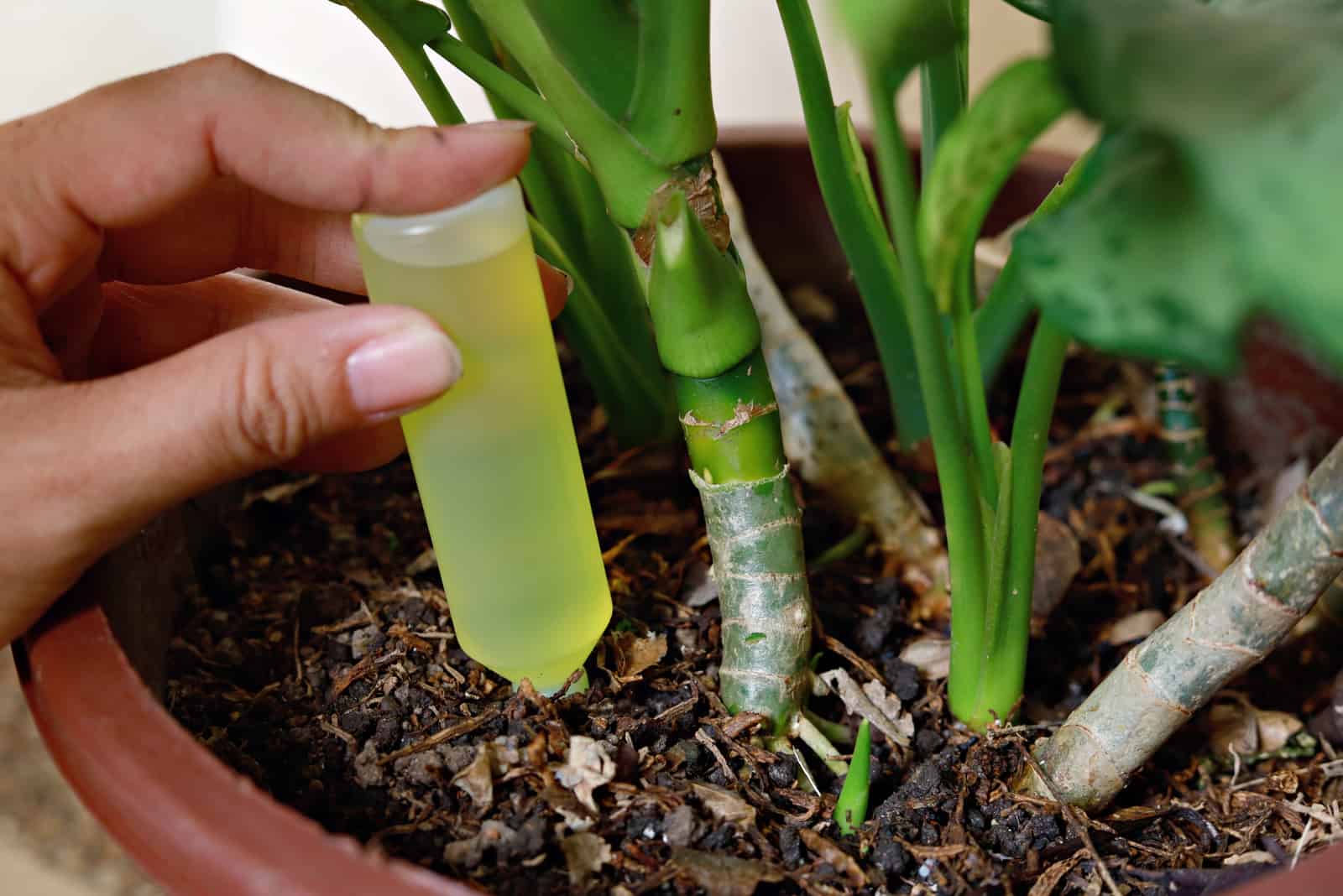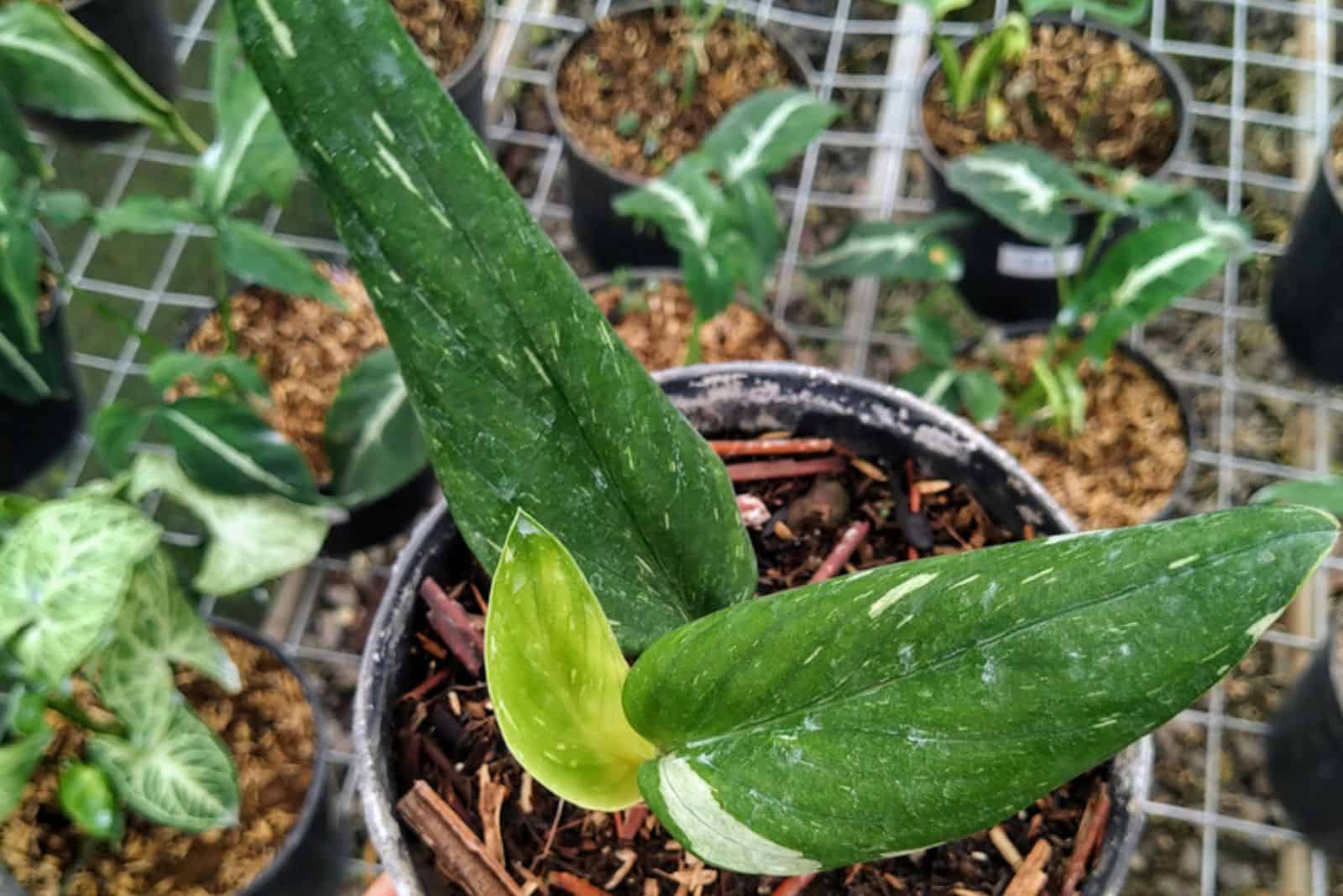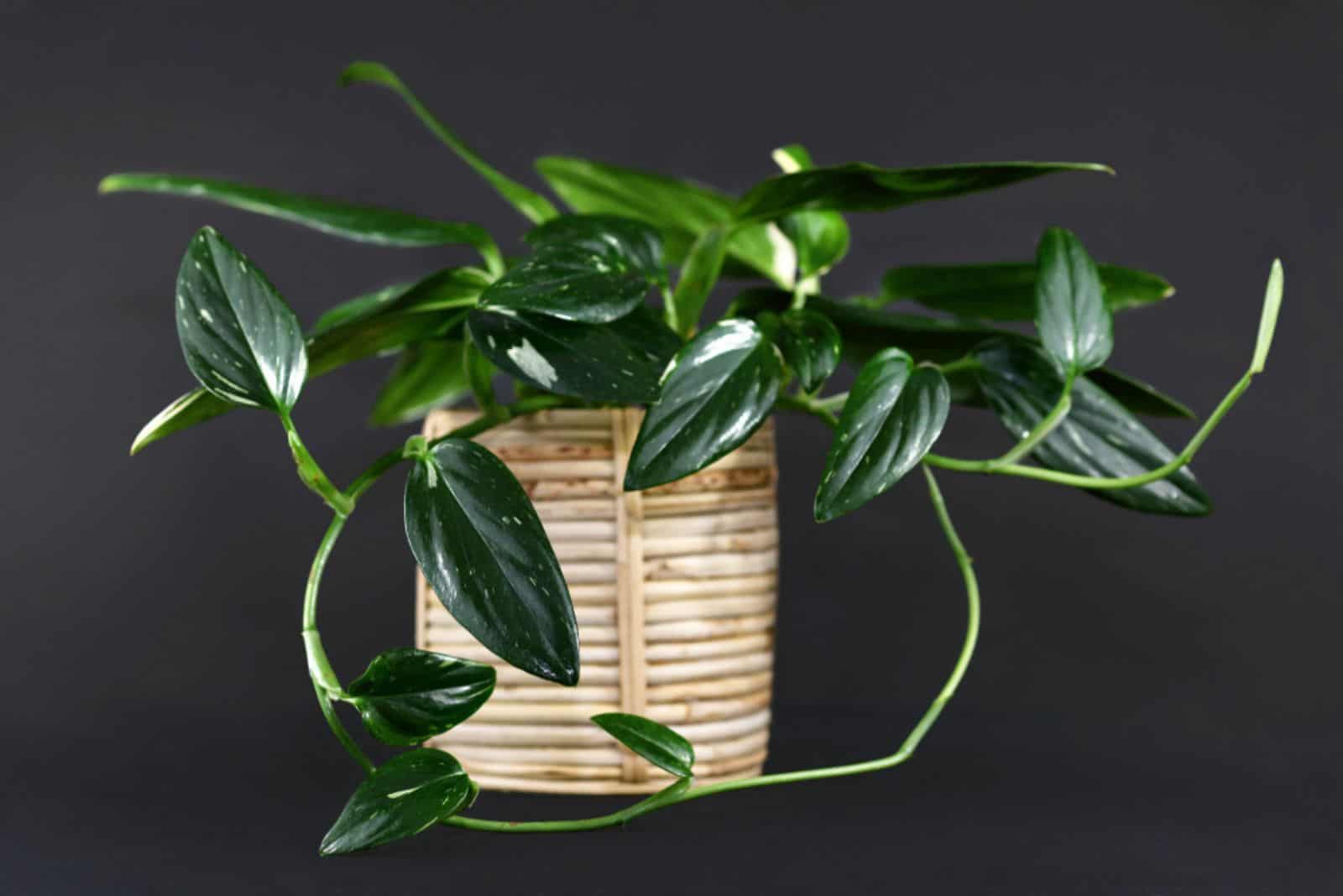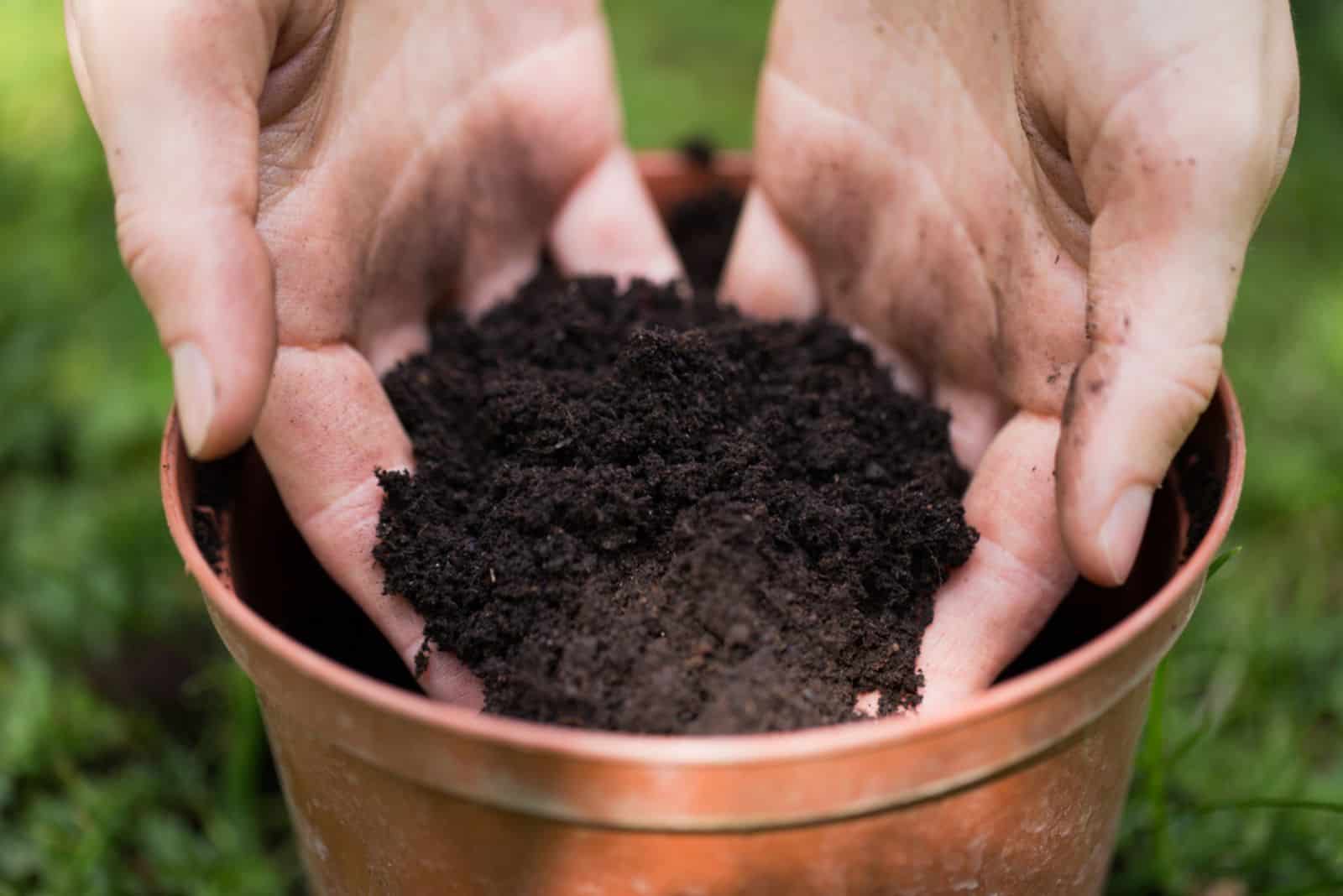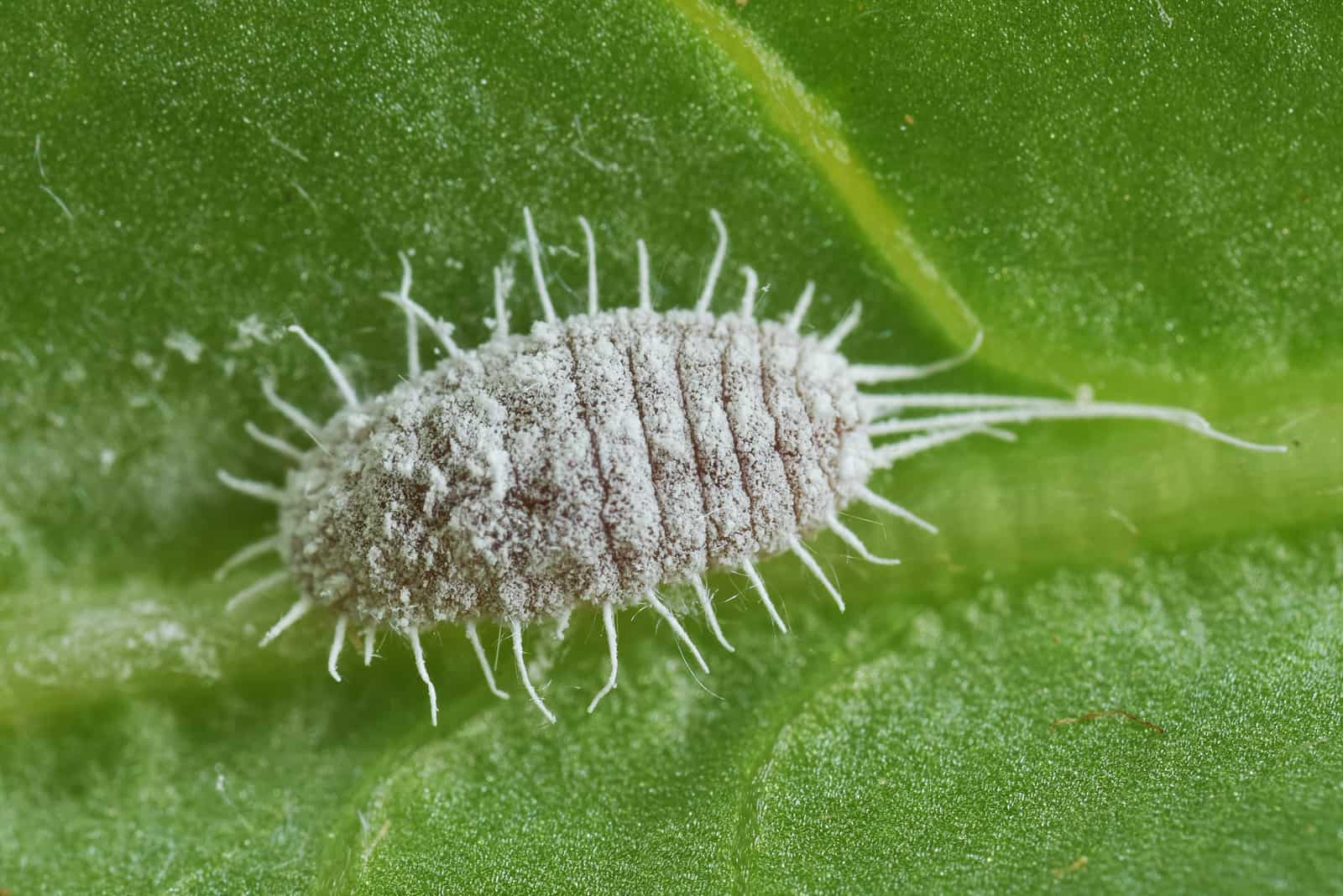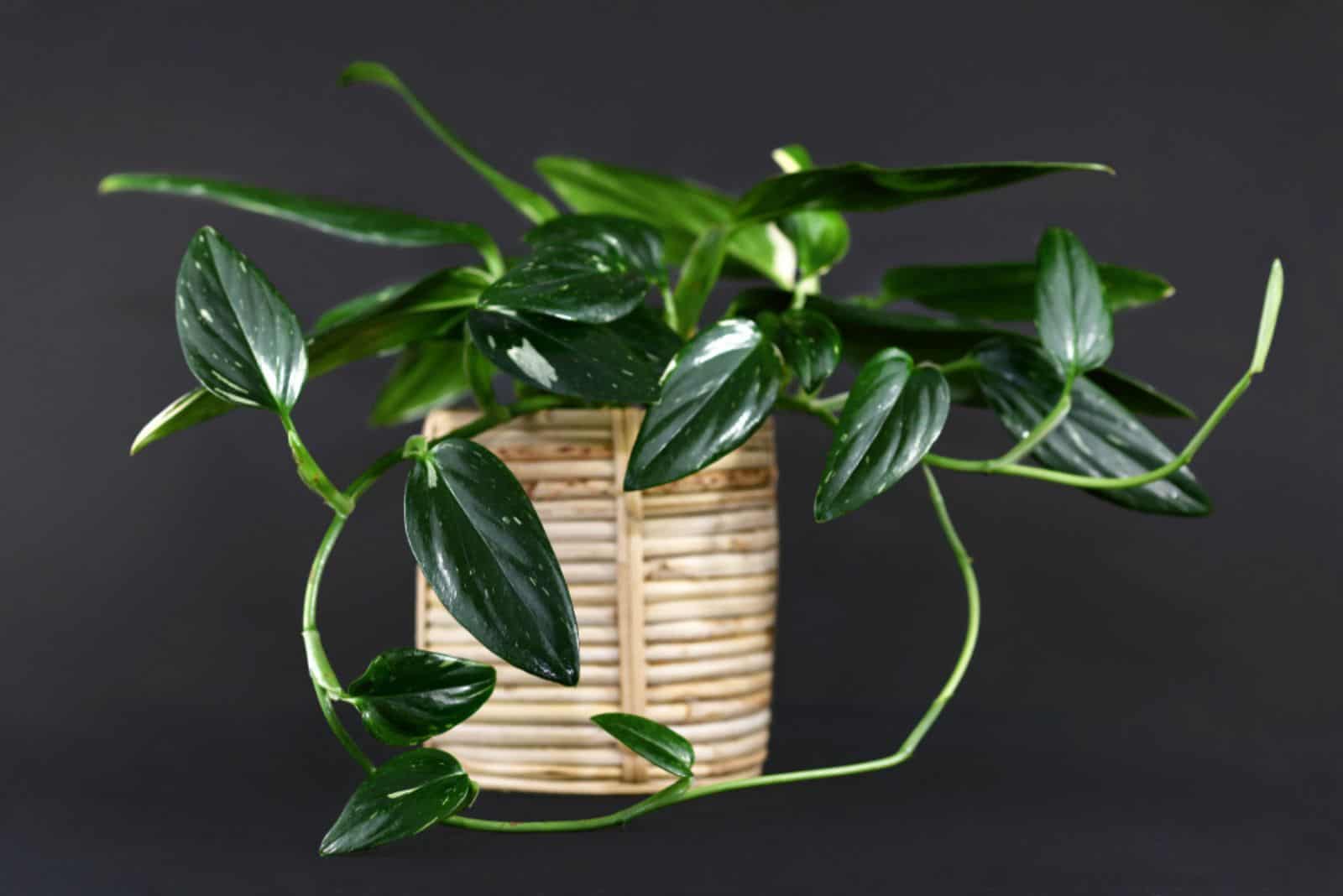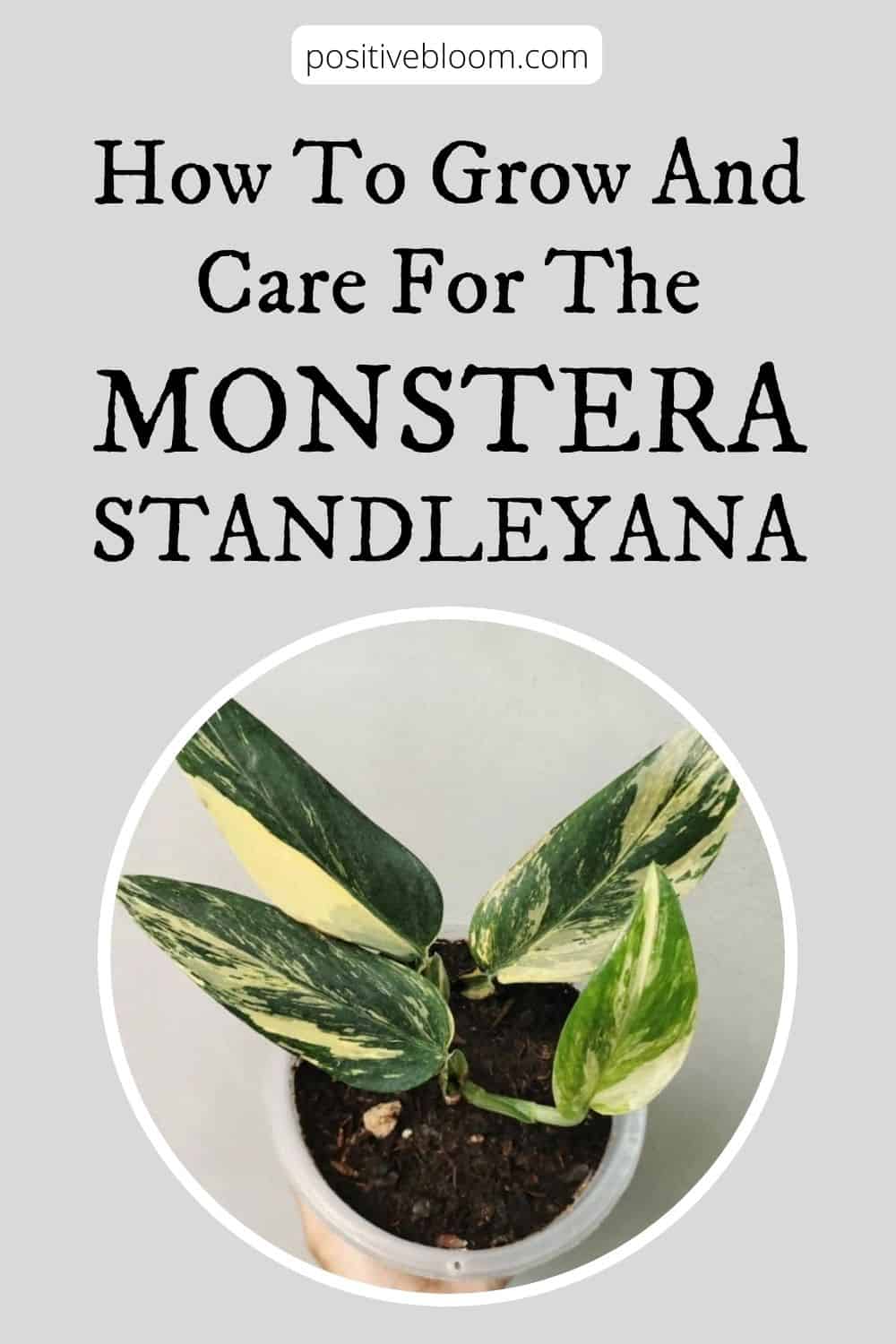No matter how many Monstera plants you grow, you’ll always be thrilled when you see a new species.
Monstera deliciosa and Monstera adansonii are the most common species from this genus, but they aren’t the prettiest ones.
Today, I will tell you more about the Monstera standleyana, a truly remarkable Monstera plant. Interestingly, some growers aren’t aware they have this variety in their plant collection because many confuse it with a Philodendron.
In this article, I’ll show you all the key Monstera standleyana features, care requirements, propagation methods, and common issues.
Let’s start with some basic info about the Monstera standleyana plant:
[table id=496 /]
Let’s get started!
What Is The Monstera Standleyana?
The Monstera standleyana belongs to the genus Monstera, just like the Monstera deliciosa, Monstera siltepecana, Monstera adansonii, and Monstera acacoyaguensis.
The Monstera standleyana is a tropical plant that naturally grows in the rainforests of South America. It has a trailing or vining growth habit, which means you can either train it to climb or grow it in hanging pots.
Monsteras develop fenestrations, aka holes in the leaves, but the standleyana is a special Monstera and, surprisingly, doesn’t have this feature.
Standleyana leaves are pretty small and oval in shape. They typically reach up to 8 inches, which is way less than other Monstera species.
Therefore, it’s not the size that makes the standleyana leaves special, but rather their glossy green color and the magnificent variegations present in some species.
Not every standleyana has variegations, but the standard green variety is just as beautiful.
Once the Monstera reaches the last growth stage, it’ll produce flowers and edible fruits in its natural habitat. When grown as a houseplant, the Monstera standleyana rarely blooms and never produces fruit.
Variegated Standleyana Species
There are two variegated Monstera standleyana species, and they are known as Monstera standleyana Aurea Variegata and Monstera standleyana Albo Variegata.
The Albo Variegata species has pronounced white splashes on the leaves, making it one of the most beautiful variegated plants ever.
The Aurea Variegata features smooth, glossy, oval-shaped leaves with yellow speckles or strokes.
Believe it or not, every leaf has different variegation, making this variety truly unique.
The Monstera Standleyana Care Guide
Monsteras aren’t so popular for no reason! These plants are easy to maintain and will reward you with amazing glossy green, sometimes variegated leaves.
Of course, you need to meet all the Monstera plant requirements if you want it to thrive.
The Monstera standleyana requires bright indirect light, warm temperatures, high humidity, well-draining, moist, and porous soil, feeding during the growing season, occasional pruning, and annual repotting.
Let’s get into details!
Light Requirements
It’s crucial to remember that tropical plants receive small amounts of full sun in their natural habitat. They actually flourish in partial shade.
The best light level for the Monstera standleyana plant is bright indirect light. It may grow well in low light, but honestly, I wouldn’t experiment.
Place your standleyana plant near an east-facing window for best results.
That way, it will be protected from damage because it will receive the required direct sun in the morning, but get indirect light during the afternoon.
You can put it near a window with northern exposure. It will grow slower, but its overall health won’t be affected.
The only disadvantage of northern exposure is that the plant cannot receive enough light during the winter. In this case, move your Monstera standleyana to a more sunny place during the colder months.
If you are unable to find a location in your home where the Monstera standleyana plant can receive roughly 10 hours of light each day, you might want to consider buying artificial lights.
If the sun is too strong and can reach the plant, put sheer curtains on the window.
Temperature Requirements
The ideal temperature range for Monstera standleyana plants is between 65 and 85 degrees Fahrenheit. This should be easy to maintain in the majority of homes.
The lowest temperature that these Monsteras can survive is about 55 degrees Fahrenheit. These aren’t frost-tolerant plants, and colder temperatures may quickly kill them.
Monstera standleyana plants can’t withstand cold drafts, so keep them away from heaters and air conditioners. Temperature fluctuations may lead to severe damage.
Humidity Requirements
The Monstera standleyana enjoys high humidity levels, and anything above 50% will work well.
You’ll need to figure out a means to raise humidity levels because they are often low in households.
Fortunately, there are a few methods for increasing humidity that have a good probability of success. You could make a pebble tray or buy a humidifier, for example.
A humidifier is a pricey device, so if you don’t want to spend much money, use low-cost options instead.
You can spritz your standleyana plant with water or put it in a kitchen or bathroom because these rooms have high humidity levels.
Another effective way to boost humidity is to put your houseplants close together to create a microclimate.
If you grow other Monsteras, such as a Monstera dubia or obliqua, group them to increase humidity.
Soil
The roots of Monstera plants are delicate and won’t withstand too much water in the soil, so when choosing the ideal soil mix we must ensure it’s well-draining. Additionally, we should pay attention to the pH level, fertility, and aeration.
Materials such as perlite enhance the drainage of the soil, while peat moss aids in water retention.
The soil blend for aroids contains these materials. As far as the pH level is concerned, the perfect range is between 5.5 and 7.0.
Even though peat moss decreases the pH level, it is rich in nutrients so your Monstera standleyana will flourish in it.
You can also combine standard potting soil (50%), sphagnum moss (10%), perlite (10%), and orchid bark (30%) to make a great soil blend.
Watering Schedule
Monsteras are fussy about watering! They prefer moist soil, so you shouldn’t leave them without water, but they’re also susceptible to overwatering so you should never allow water to accumulate in the soil either.
The easiest way to prevent watering issues with Monsteras is to allow the top two inches of the soil to dry out.
Overwatering can cause root rot in Monstera plants, which can be detrimental.
The watering schedule for a Monstera standleyana depends on many factors. For example, the plant will need a lot of water during the hot summer months. If you don’t pay attention to soil moisture during that time, you could end up with an underwatered Monstera.
Other conditions that enhance water evaporation are high humidity and direct sunlight.
Once the temperatures drop, your Monstera won’t need much water and it will be easier to keep the soil moist.
It’s a good thing as you won’t need to water frequently. However, the bad thing is that it’s easy to overwater your Monstera during the colder months.
Just check the Monstera standleyana soil’s moisture level before adding any water.
One more thing – when you water your standleyana plant, be sure to give it a good soak and keep watering until the water starts coming out from the drainage holes.
Fertilizing Schedule
As mentioned, the Monstera standleyana flourishes in fertile soil, so you’ll need to feed it to encourage new growth.
Nitrogen is a crucial component for lush and vivid leaf growth, so I recommend fertilizers with a high concentration of this nutrient.
For example, plant food with an NPK ratio of 20 20 20 needs to be diluted to prevent it from burning the leaves.
The best type to use is liquid plant food, which is pretty easy to apply and will release the nutrients gradually.
If you decide to use organic plant food for your Monstera standleyana, apply it monthly during the growing season.
Don’t overfeed your standleyana plant because it could result in chemical buildup in the soil, making it difficult for the roots to absorb nutrients and water.
Your Monstera standleyana will sleep during the winter (dormancy), so you don’t need to feed it at all.
Pruning
When it comes to the Monstera standleyana plant, pruning doesn’t play a significant role in its growth.
The best thing you can do is remove any damaged or discolored Monstera standleyana leaves.
Whenever a leaf starts to turn yellow, I always trim it off.
You can control the shape and growth of your Monstera plant by cutting off a few branches at the beginning of the growing season.
Repotting
For best results, you should repot your Monstera every year.
That way, you’ll freshen the soil mix and add new nutrients.
Plants typically go through shock after repotting, so it would be ideal to repot your standleyana when the growing season begins (early spring).
Prepare a new pot for your Monstera, fresh soil mix, and sanitized cutting tools.
Regarding pot size, it shouldn’t be considerably larger than the current one; 2 inches larger should suffice.
Consider the pot’s material as well because some can aid in moisture retention, while others improve the water evaporation rate.
I recommend terracotta pots for your Monstera standleyana, just make sure it has drainage holes in the bottom.
How To Repot The Monstera Standleyana
Here are the steps for repotting a Monstera standleyana plant:
1. The roots of your Monstera are delicate, so you should be very careful when taking the plant from its container. If it doesn’t come out, you can tip the pot to one side and let it slide out on its own. The only thing you should never do is pull your standleyana.
2. After taking the standleyana from its container, it’s time to remove as much soil from the roots as you can. Now is also a great time to check the plant’s roots for infections. If they are diseased, you must cut them off with sterilized shears.
3. Add enough new soil mix to fill the bottom third of the pot. Gently lift your standleyana, place it in the center of the soil, and add more soil until the root system is covered.
4. Water your standleyana, and that’s it; you are done with repotting!
Staking
This plant produces aerial roots, so I recommend staking your Monstera using moss poles, trellis, or similar supporting structures.
If you train your Monstera to climb, you’ll imitate its natural surroundings and it will grow better and healthier.
Many grow standleyanas in a hanging pot, so if you aren’t into staking then this option is for you.
How To Propagate The Monstera Standleyana
There are many methods you can use to get a new Monstera standleyana plant, but you can’t propagate a Monstera that has no nodes.
The best propagation method for the Monstera standleyana plant is using stem cuttings.
Let’s first discuss what to prepare. Before doing anything else, you need to inspect your standleyana plant and ensure it’s fully healthy.
You’ll also need a cutting tool, such as a pair of shears or scissors. You’ll need to clean the tools using sterilizing solutions such as rubbing alcohol or bleach.
You’ll need to choose a rooting medium for the Monstera standleyana cutting, and you can either use soil or water.
Prepare a transparent vase or any other container you can see through for water propagation. You’ll need fresh and clean water.
For soil propagation, you need adequate soil for the standleyana plant and a nursery pot.
Let’s propagate!
Steps For Propagating The Monstera Standleyana In Water
Here are the steps for how to root Monstera cuttings in water:
1. Choose a healthy section of the Monstera standleyana stem to propagate. The only stem cuttings that will successfully propagate are those that have a leaf node attached. The nodes will actually generate new growth.
2. Cut the Monstera standleyana cutting half an inch below the node with clean and sharp scissors. Be gentle when handling the cutting because it is delicate, and even minor damage could stop the process of propagation.
3. Fill your container with clean water and carefully insert the cut. Remember that at least one Monstera node should be below the water line.
4. Find the ideal location for the standleyana cutting. The cutting will produce a robust root system if it receives enough light.
Never expose the cutting to direct sunlight as this may burn it and greatly reduce your chances of getting a new standleyana plant.
5. The cutting could quickly rot if the water isn’t fresh. To avoid this, refreshen the water every three days.
6. When the Monstera standleyana cutting develops roots and they reach a few inches in length, you can transplant the cutting into the soil.
7. Fill the bottom third of the nursery pot with a suitable soil mix and make a small hole. Put the rooted Monstera cutting in the center and add more soil to secure it.
Steps For Propagating The Monstera Standleyana In Soil
Here are the steps for propagating the standleyana plant in soil:
1. You first need to take the stem cutting using the method described above.
2. Fill the nursery pot with a soil mix suitable for the standleyana plant and make a hole in the center.
3. Put the Monstera standleyana cutting in the soil. You can stake it if you notice it needs support.
4. When using this technique, it’s crucial to ensure that the cutting is placed in a room with high humidity. Keep your cutting moist all the time by spraying it every day or wrapping it with a plastic bag.
5. Again, the standleyana cutting needs a lot of bright indirect light to generate new growth.
6. You’ll know that the cutting has developed a root system if you pull it (gently) and it resists. That’s it! Transplant the cutting into the new pot (with drainage holes) and resume appropriate Monstera standleyana plant care!
Common Issues
Generally speaking, you shouldn’t have any issues with your standleyana plant if you ensure the ideal growing conditions.
Here are the most common problems that may occur with your Monstera standleyana.
Pests And Diseases
Some pests seem to really enjoy feeding on Monstera standleyana leaves. Always keep an eye out for them because the quicker you remove them, the faster your standleyana will recover.
The most frequent and irritating insects that can infest your plant are aphids. These insects will take the nutrients away from your standleyana by sucking its sap.
Aphids need to be eliminated immediately because if they form colonies your standleyana will lose all its nutrients.
To lower the number of aphids, wash your standleyana with cold water, make a solution using insecticidal soap and water, and spray it all over your standleyana. Aphids should be gone soon after this.
The other annoying creatures that may attack the Monstera standleyana plant are spider mites.
They steal food from the plant while hiding on the underside of the leaves. These are their feeding areas, which can be seen as light brown dots.
Trim any affected parts of the plant that are beyond repair and apply the insecticidal solution.
Diseases
If you have heard of Monstera plants, then you have also heard of root rot. All indoor plants are susceptible to overwatering, which leads to root rot in most cases.
The most common symptoms of this disease include mushy soil, unpleasant smell, stunted growth, and yellow leaves.
These are the changes you’ll first notice as they are above the soil line.
But what happens in the soil is way worse. The rotten roots are discolored, typically brown or black, mushy, and smell terrible.
Therefore, if you notice the abovementioned symptoms, I recommend taking your standleyana out of its pot and inspecting the root system.
You’ll need to cut off the rotten roots and apply fungicide to the root system to prevent the infection from spreading.
Monstera Standleyana Leaves Curling Or Wilting
The most common cause of wilting or curling standleyana leaves is underwatering.
These plants won’t withstand excess water in the soil, but aren’t drought-tolerant. They are not succulents, and you need to keep their soil moist constantly.
Interestingly, wilting can also occur if you overwater your standleyana plant. The excess water will suffocate the roots, and they’ll stop functioning and won’t send any nutrients or water to the other plant parts.
First, you need to determine the cause of curling or wilting; if underwatering is the culprit, just water your standleyana more frequently until it recovers.
If the soil is mushy, then you are dealing with the opposite issue.
Yellow Leaves
There are many causes of yellow Monstera leaves. The most common ones are too much or too little water in the soil, lack of nutrients, insufficient light, and temperature fluctuations.
Check if all conditions are adequate as per the information above.
FAQs
Is the Monstera Standleyana rare plant?
The Monstera standleyana is a rare Monstera variety, especially its variegated cultivars, Aurea Variegata and Albo Variegata. Many growers want to add this Monstera to their plant collections, which is another reason it’s hard to get.
Is the Monstera Standleyana a safe indoor plant?
The Monstera standleyana is a toxic plant, so I wouldn’t call it safe if you have small children or pets.
You need to keep it out of reach because accidental ingestion causes issues such as oral irritation and mouth and throat swelling. Monstera poisoning in pets results in excessive drooling and mouth pawing.
What is the difference between the Monstera Standleyana and Philodendron Standleyanum?
There is no such plant as the Philodendron standleyanum. The Monstera standleyana resembles Philodendrons in appearance so it got the nickname Philodendron cobra. Still, it has nothing to do with plants from the Philodendron genus.
Wrapping Up
Many Monstera species are grown as houseplants worldwide. Trust me, the more plants you grow, the more Monsteras you’ll want to add to your plant collection!
The Monstera standleyana is a rare variety, but it’s just as beautiful as other common species. Variegated standleyana plants look breathtaking.
These plants are easy to maintain, just make sure it’s out of reach because it’s toxic. If you ensure all necessary conditions, the standleyana plant will grow healthy and be happy for many years to come!
Until next time!
Like this post? Share or pin it for later!

